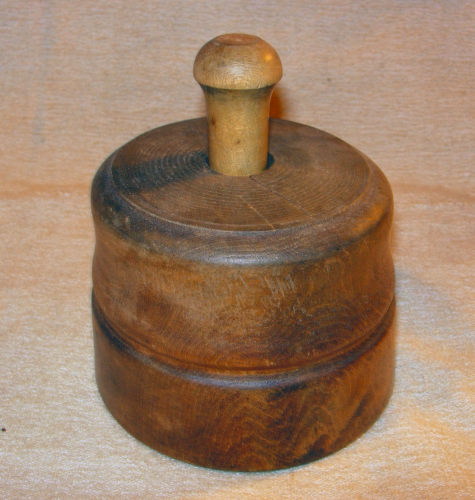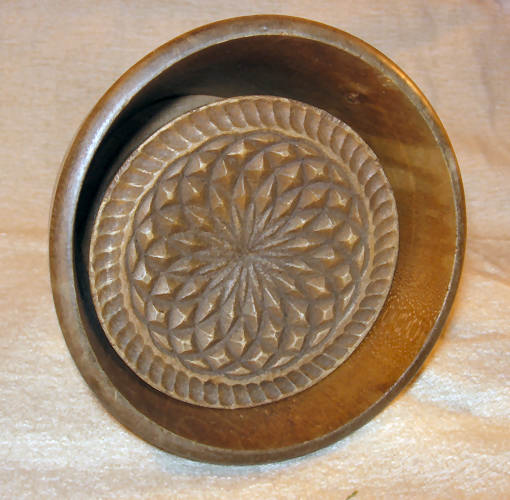


| Butter molds were fashionable during the Colonial Period and on into the early 1900s. A housewife would churn butter from the sweet cream of the milk that was obtained from the family's cows. And after the butter had been formed in the churn, she would scoop it out and 'work' it, i.e. knead it. Then she would pack it into the butter mold. By pushing on the handle, or plunger, of the mold, the cake of butter would be pushed out and onto a plate. {There was a trick to getting the butter to accept and maintain the impressed design, and allow itself to be pushed out of the mold without smearing. The butter mold would be soaked in water and then chilled. Then, after the butter was packed into the mold, it would be 'refrigerated' to harden before being pushed out.} The 'face' of the mold was often carved with some fanciful design which was transfered onto the top of the cake of butter. Using a butter mold was one of the ways that a housewife could personalize the product of her work. In most cases, a housewife only ever possessed one singe butter mold, so it became her personal and unique design, which could then be passed on to her daughter. As can be seen by the butter molds exhibited here, the cup part is invariably bell-shaped. This ensured that the butter could be more easily pushed out. It should be noted that the cup part of the mold was often lathe-turned, while the plunger's face was hand carved. |
| The butter mold shown here has a 'starburst' design. The size of this mold is what would be considered a '2-pound' size. Molds were made to produce basically three sizes/weights of butter: 2-pound, 1-pound, and 'pat'. The 2-pound size mold measures approximately four inches inside diameter by a depth of two inches. The 1-pound size mold measures approximately three and one-half inches inside diameter by a depth of one inch. The "pat" size mold measures approximately one and one-half inches inside diameter by a depth of three-quarter inch. |

